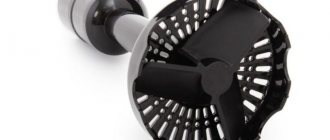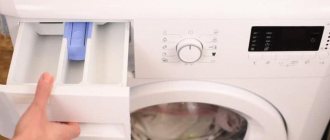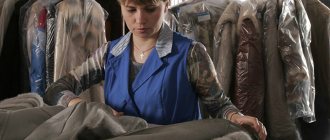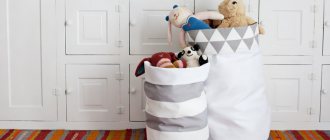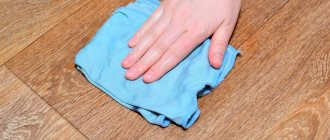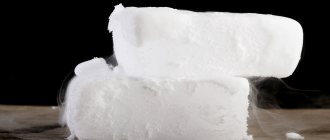Furniture made from chipboard and MDF has long become commonplace. New, easier to process and use, cheaper materials are actively replacing traditional products made from various tree species. And this is not surprising. The performance characteristics of high-quality artificial materials based on sawdust are in no way inferior to solid wood. And in a number of parameters they are even superior.
When choosing furniture for their home or apartment or organization, many buyers ask a logical question: how reliable and durable are these materials, and what are their differences. You often hear that DSAMP and MDF are practically the same thing, made according to common recipes, and there is no point in choosing. Is it so? In order not to make a mistake when choosing furniture, you need to clearly understand the differences between these two materials. What nuances need to be taken into account when purchasing furnishings for certain needs. Let's try to figure it out together with the experts.
What are the differences between laminated chipboard and MDF?
At first glance, indeed, furniture made from chipboard and MDF looks the same. The products look good, almost the same colors and textures are used. Even the shape and style of many models of kitchen, bedroom or living room sets are made according to the same design. Meanwhile, the difference between them is huge: in quality, in operating conditions, and even in price. All the differences are hidden in the depths, behind the attractive facades. They are associated with the peculiarities of production technologies for particle boards and finely dispersed fractions.
Basic similarities of materials
The main similarity of the materials is that they are a cheaper analogue of natural wood and are used in the production of kitchen sets, living room cabinets, bedside tables, beds and other furniture elements. There is a wide variety of color solutions on the market, which allows you to bring the most daring design ideas to life.
Wood panels require the same care. It is recommended to avoid exposure to high temperatures: at 75 degrees or more, peeling of coatings is possible. You should avoid exposure to direct sunlight: this is how the paint (film) loses its shine and fades. Prolonged contact with water is undesirable: this leads to swelling of sawdust and subsequent deformation of furniture products.
Disadvantages of laminated chipboard
- Due to the large number of large chips and heterogeneity of the structure, chipboards are prone to chipping of individual particles and the appearance of chips. Products can only be sawed in straight lines. They are not subject to fine milling or laser engraving. Therefore, it is very rare to find beautiful furniture facades made of chipboard, with figured cutouts, 3D relief images, and complex patterns. Mostly even, smooth doors are made from this material, suitable for modern styles.
- If water regularly gets into the joints and seams, the surface in these places swells and bulges into a hump. The product increases its volume up to 30%. The film begins to peel off. Inside the slab, the mass becomes loose, crumbles, and black mold appears. To avoid this, you should choose furniture with laser-cut edges (soldered joints). Such products are more durable. In addition, spilled liquids must be promptly removed by wiping the surface with a soft, clean cloth.
- Due to the low density of the base, the places where the fittings are attached gradually crumble. The fasteners begin to move freely in the socket. Furniture made from chipboard is not intended for frequent assembly and disassembly. It is enough to transport the set 1-2 times to a new place of residence, and it will warp in the most unimaginable way due to completely loose fastenings. To remedy the situation, you can use wood glue or use thicker screws. Or initially purchase products that use not ordinary fasteners, but bolts with wide washers.
- Low-grade types of chipboard negatively affect the health of children, adults, and pets. To produce the cheapest materials, large amounts of resins that emit formaldehyde are used. If new furniture has a specific, chemical smell, it is better to refuse the purchase. Living next to such a time bomb is simply dangerous.
Perhaps the most important disadvantage of laminated chipboard is its short service life. Such furniture lasts on average 5-7 years, subject to the rules of operation.
Chipboard production? How to define quality?
To produce chipboard, sawdust and shavings are compressed and impregnated with formaldehyde resins for gluing, and the resulting board is usually laminated with melamine film.
The letter “L” at the beginning of the abbreviation indicates that the chipboard is laminated. The film not only protects the slab from moisture and other external influences, but also prevents the release of formaldehyde into the external environment. There is a safety classification for laminated chipboards based on the concentration of formaldehyde:
- E1 – formaldehyde emission class, considered safe for furniture production (this board is made according to European standards;)
- Class E2 - strictly prohibited for use in the production of children's furniture;
- Class E 0.5 – also complies with European quality standards. However, its use is not always necessary, since the film prevents the evaporation of the harmful compound;
- E 3 – strictly prohibited for use in production.
When buying furniture, be sure to ask the seller about the safety class and ask for certificates.
Advantages of MDF
- Since formaldehyde resins are not used in the production of MDF boards, they are much safer than chipboard. In fact, it is the same wood, with a small content of natural or urea resins, only more uniform and durable. The material is used in the manufacture of children's furniture, cribs and changing tables for newborns, products for children's and medical institutions. By purchasing furniture made from high-quality MDF, the buyer can be completely confident in its safety for health.
- MDF, even in its natural, uncovered form, is not afraid of water. Its dense structure simply does not allow liquids to be quickly absorbed, unlike some types of natural wood and, especially, chipboard. And an additional protective coating in the form of a laminating film or veneer gives it excellent moisture-resistant characteristics. Even many hours of exposure to puddles of water or other liquids are not dangerous for MDF surfaces. That is why furniture made from this material is recommended for “wet areas” - kitchens, bathrooms, swimming pools, toilets, dressing rooms.
- Dense sheets can be bent if necessary: they do not break or crack, and retain their shape perfectly. This feature is widely used in the manufacture of curved or concave facades and other elements.
- MDF sheets, thanks to their homogeneous structure, make it possible to produce richly decorated furniture facades. They perfectly withstand all types of processing: sawing, shape cutting, milling. The possibilities of milling this material are limited only by the designer’s imagination. Craftsmen form products with relief figures and designs, carve complex recesses and patterns, apply entire pictures to slabs, and make carved platbands and moldings.
- The edges and front part of the products have no joints or seams, as they are covered with one sheet of protective and decorative material. That is why products made from MDF successfully resist moisture and chemicals. The coating is so dense that it is very difficult to scratch or make a dent.
- You can spill water, caustic fruit acids, or soda solution on MDF countertops and kitchen aprons. If you wipe up the resulting puddle in a timely manner, there will be no consequences for the coating.
- Furniture made from MDF perfectly withstands repeated assembly and disassembly when moving and moving to other rooms. In this respect, it is comparable to products made from natural solid wood.
- Consumers are offered a huge number of finishing options: PVC film with the most fantastic shades and textures; glossy, mirror, matte and semi-matte coatings; products with metallic, mother-of-pearl effects, interspersed with sparkles and metal threads, patina; veneer from elite wood species; surfaces that perfectly imitate any type of wood, stone, textiles, leather. Even the most picky buyer will definitely find a product to his liking!
Painted facades
Painted facades can be ordered in a wide range of colors. They can be:
- matte;
Matte
- chameleon;
Chameleon
- pure color;
- steel metallic.
Steel metallic
The advantage of such facades at a fairly high price category is their long service life.
A high-quality facade cannot contain foreign inclusions or roughness. Visual inspection shows a perfectly mirror surface.
This is achieved by grinding at different levels:
- primer;
- dye;
- varnish
This façade is made using special technology and requires precise execution of all stages. The resulting result will please the owners for a long period of time. It is for this type of MDF that it does not matter whether it is painted on one or both sides. Such panels are not afraid of water, steam, or moisture.
Experts who make furniture do not recommend choosing facades based on chipboard or plastic with its application on one side. Caring for a painted facade requires cleaning approximately every six months. Ease of maintenance depends on the ergonomics of furniture designs. Surface care is simple.
A regular window cleaner will work for this. If any grease stains remain, you can wipe them with a sponge or cloth with detergent.
Surface cleaning
The surfaces are fairly easy to clean and are not susceptible to heavy contamination.
What are the disadvantages of MDF?
- Quite a high price compared to chipboard - 30-50% higher. High-quality MDF boards, coated with natural veneer, elite types of plastic or durable enamel, are close in cost to solid wood. However, they last two to three times longer than products made from chipboard or even solid wood.
- Plates consisting of small, homogeneous particles are prone to burning, even despite special impregnation with fire retardants.
- Dense material has more weight than particle boards, which affects the weight of the finished products. This must be taken into account when transporting and choosing an installation location.
To reduce the final cost of products and increase the number of sales, furniture manufacturers offer compromise options:
- cabinets for kitchens, living rooms, and bedrooms are made from straight, laconic chipboard plates;
- and beautifully decorated, carved facades are made from MDF.
Such furniture is affordable and lasts longer, thanks to durable, high-quality facades that take the brunt of the impact.
Recommendations for caring for kitchen furniture
A lot of grease and dust settle on kitchen surfaces, so they need constant care. The headset should be cleaned according to the manufacturer's instructions.
You need to care for the furniture carefully so as not to damage the coating. Designers recommend following certain rules to achieve maximum lifespan of the headset.
Tips for caring for kitchen furniture:
- Do not use abrasive detergents, soda, solvents, or hard tools for cleaning.
- To remove oily or stubborn stains, use substances with ammonia.
- Wooden and laminated surfaces are cleaned with a soft cloth, onto which a neutral product is applied.
- For shine, facades are rubbed with compounds containing beeswax.
- Special aerosols are used to clean wooden furniture. There is also a dry cleaning method using a vacuum cleaner with a special attachment.
- The varnished surface needs protection from direct exposure to sunlight.
- Kitchen furniture should not be wiped with a damp cloth.
- The interior surfaces of the drawers are cleaned with a cloth moistened with a small amount of cleaning agent.
- Aluminum profiles are cleaned with liquid detergents or denatured alcohol.
- Make sure that there is no accumulation of water on kitchen surfaces, otherwise the plastic will swell and the panels may come off.
Manufacturers offer a wide range of kitchen furniture. When choosing products, you should rely on your preferences and tastes. The differences in the characteristics of the materials are insignificant, and both options are excellent for making a high-quality and beautiful kitchen set.



